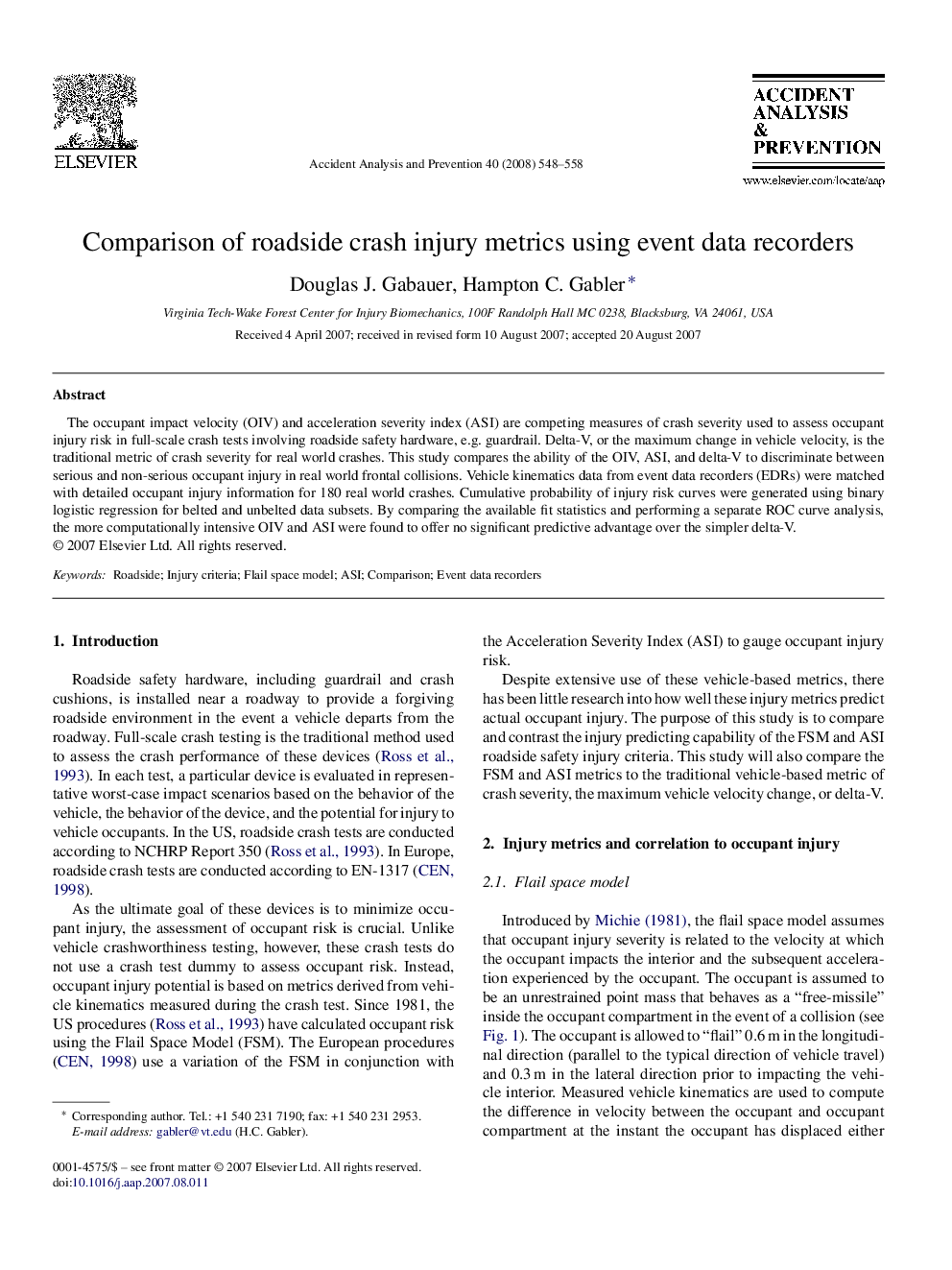| Article ID | Journal | Published Year | Pages | File Type |
|---|---|---|---|---|
| 573472 | Accident Analysis & Prevention | 2008 | 11 Pages |
The occupant impact velocity (OIV) and acceleration severity index (ASI) are competing measures of crash severity used to assess occupant injury risk in full-scale crash tests involving roadside safety hardware, e.g. guardrail. Delta-V, or the maximum change in vehicle velocity, is the traditional metric of crash severity for real world crashes. This study compares the ability of the OIV, ASI, and delta-V to discriminate between serious and non-serious occupant injury in real world frontal collisions. Vehicle kinematics data from event data recorders (EDRs) were matched with detailed occupant injury information for 180 real world crashes. Cumulative probability of injury risk curves were generated using binary logistic regression for belted and unbelted data subsets. By comparing the available fit statistics and performing a separate ROC curve analysis, the more computationally intensive OIV and ASI were found to offer no significant predictive advantage over the simpler delta-V.
